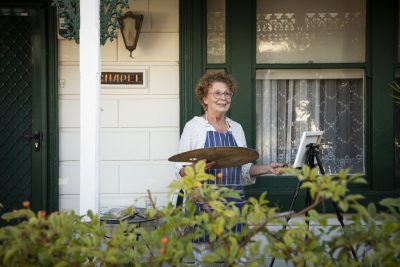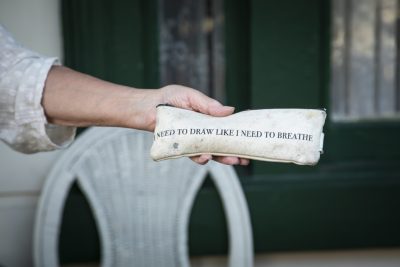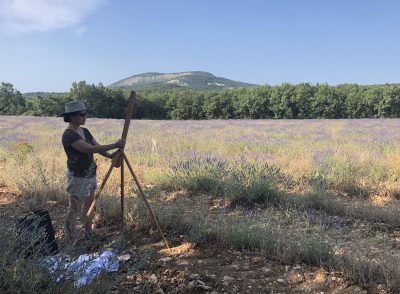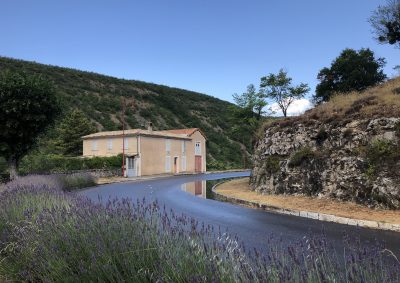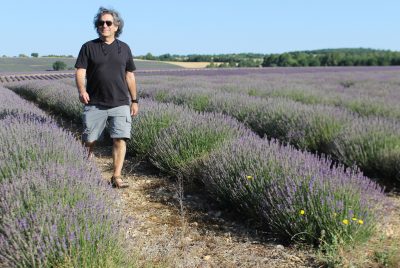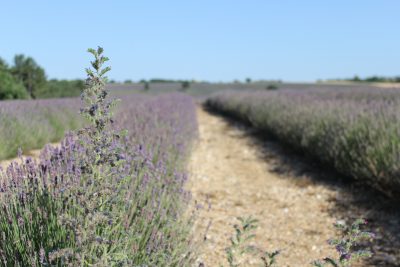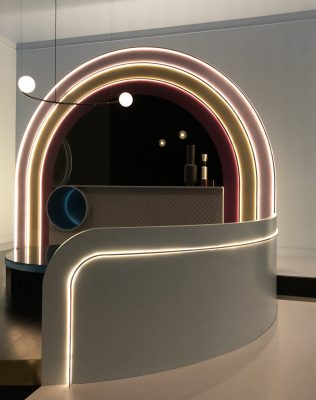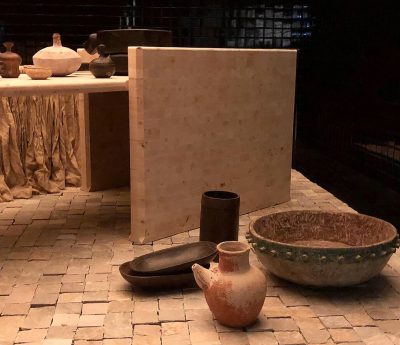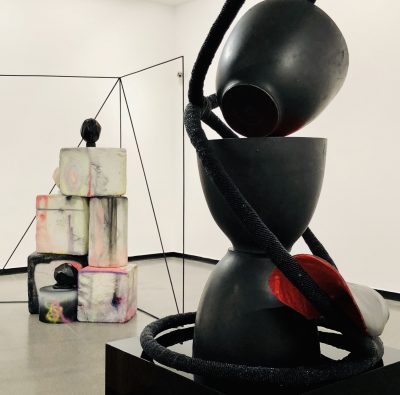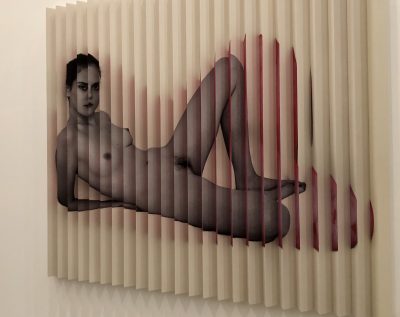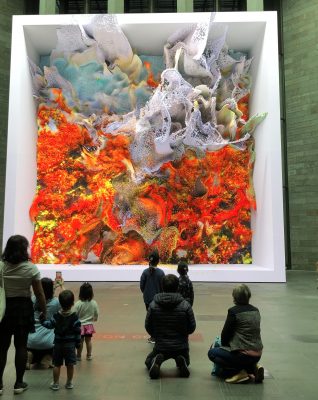
Quantum Memories – Refik Anadol
A gift to the people of Melbourne, when we needed it most! For four seasons – autumn, winter, spring and summer – 2020 has been without the tangible art experience, the ‘being there’. My last blog http://www.pamelareid.biz/home-is-where-the-art-is applauded what we could share in the arts and entertainment worlds, from my home and with friends internationally. What I missed most during those long months was sitting in a concert hall, pre-performance, the orchestra tuning as audiences shuffle in their seats, and the ‘up close’ pleasure of gallery space.
At this time of writing, we still can’t attend indoor concerts, but the National Gallery of Victoria has exploded with the Triennial 2020, welcoming all ages, celebrating that ART IS FOR EVERYONE!
COLOUR AND MOVEMENT
On entering the NGV, grandiose colour and movement invites. It looms against the grey stone backdrop, ever-swirling. “Quantum Memories” by Refik Anadol (Turkey). While its purpose relates to the complexities of AI (artifial intelligence), it is the vast scope of colour, spilling out from the frame, that mesmerises. In my professional entertainment industry world, this is ‘one helluva an opener’. The show hasn’t started and, already, people are seated, watching, photographing, anticipating.
Exquisite in blues, Australian artist, Dhambit Mununggurr’s “Can we all have a happy life” exhibits fifteen bark paintings and nine hollow poles (larrakiti). The reason for this spirited colour differentiation from the usual ochres and earth tones is because Mununggurr is confined to a wheelchair – the result of an accident – unable to manage the physical tasks involved in making and applying the necessary pigments. She was given permission by her Aboriginal community of Yirrkala (Northeast Arnhem Land) to use acrylic paints for her blue palette in Yolŋu art.
Stepping up onto (Australian Designer) Danielle Brustman’s “Coloured In” carpeted stairs, you relax into your own sense of style, overlooking Leonard French’s cut glass ceiling and the NGV Great Hall. I recall equally enjoying her (Finalist) Art Deco “Inner-Terior” at the Rigg Design Prize 2018. http://www.pamelareid.biz/ngv-on-design





Photos: Quantum Memories – Refik Anadol; Can we all have a happy life – Dhambit Mununggurr; Coloured In – Danielle Brustman
A THING OF BEAUTY
It’s in the eye of the beholder, and there are many works at the Triennial to attract an individual’s senses. “Venus”, that very goddess of love, glistens and scintillates. Sculptured in stainless steel by American artist, Jeff Koons, her much larger than life figure stands alone – not your usual representation of one of Roman and Greek Mythology’s best-known beauties.
A glorious garden of fabric covering surrounds the walls, enhancing the NGV’s 16th and 17th Gallery. “Natural History 2020″ (David Allen Burns and Austin Young / Fallen Fruit) was inspired by the American artists’ research trip early last year to Melbourne’s Royal Botanic and other gardens. More than an “immersive” experience, Natural History is a stroll through the gallery, with added colour, warmth and appreciation.
South Korean artist, Lee Ufan’s “Dialogue” is a work that calls you across the room. Its apparent simplicity is what attracts, alive in its own space. If I was to pick a ‘personal favourite’ on my first visit to the Triennial – I haven’t seen it all – Dialogue would be the one.





Photos: Venus – Jeff Koons; Natural History 2020 – David Allen Burns and Austin Young / Fallen Fruit) ; Dialogue – Lee Ufan
FUN AND ILLUSION
The expression “Its all smoke and mirrors” originally pertained to stage magicians, conjurers who used actual smoke and mirrors to deceive the audience. Nowadays, it can reference obscuring or deceiving the facts, but when it comes to art, I welcome the creator as a ‘trickster’.
Alicia Kwade’s “Welten Linie” is such fun. German born Alicia, really does weave illusions with mirrors, asking ‘which is the reality and which the reflection?’ It looks good, playful as you step in and around the steel-framed hexagonal structure. At a time when everyone uses mobile phones to capture the moment, finding where you are in the space and how to frame your own image is amusing, tentative as you step forward, unsure if you’re heading into another mirror.
When you walk in to view “Plastocene – Marine Mutants from a disposable world” (South African artist, Porky Hefer) it looks like a playground for big and little kids. Colourful, oversized sea creatures are suspended from the ceiling and a giant octopus spreads across the floor space. But, the message here is a serious one, envisaging mutated outcomes of environmental pollution, disposal of cigarette butts, plastics and other trash.
Anyone who has inspected, purchased or rented a contemporary apartment will recognise “Walls 4 Sale: near new and supersized” (Zurich based Bosshard, Tavore, van der Ploeg, Vihervaara). It’s a giggle as you walk through the all-white interior, trying to reach light switches or ‘on tip toes’ to the kitchen sink – I’m a short person, I get it! Balconies with over-sized airconditioning units and a cityscape “view” that just about swallows you. Nothing is what it appears to be in the advertising. I congratulate them on this. Those around me where enjoying the experience.
“Biole, Carson, Dasha, Marisa,” are nine, small, hand-carved, wooden portraits of real people. Artist Tomaoki Suzuki was born in Japan, moved to London to study in 1998 and now resides there. These meticulous, figurative sculptures are carved in lime wood, a lengthy process that commences with Suzuki selecting his model, taking many photographs, videos, working over several months from both real life and these images.





Photos: Welten Linie – Alicia Kwade; Plastocene – Marine Mutants from a disposable world – Porky Hefer; Walls 4 Sale: near new and supersized – Bosshard, Tavore, van der Ploeg, Vihervaara; Biole, Carson, Dasha, Marisa – Tomaoki Suzuki
LIGHT AND SHADE
“Botanical Pavillion” (Kengo Kuma, Japan, and Geoff Nees, Melbourne). What draws you into this pavilion, are the gentle shadows along the pathway, reflections of its intricate and cleverly interlocked wooden construction. Architect Kengo Kuma and Artist Geoff Nees collaborated, working in a Japanese carpentry tradition, on this visually pleasing semi-circular structure. Using trees previously felled in Melbourne’s Royal Botanic Gardens, the Pavillion has that sense of being amidst a natural environment, while you admire the craftsmanship.
There is some wonderful, bold and captivating photography exhibited in the Triennial. But, as these are usually framed behind glass, it is difficult for a visitor to photograph. I would love to take Ethiopian, Aïda Muluneh’s “Memory of Hope” series home with me, hang them on my walls and admire them every day. Aïda uses culturally significant strong colours and linear patterns in her compositionally compelling images.
It’s difficult to capture the impact Dutch-American Artist, Lara Schnitger’s “House of Heroines” as it comprises a Grecian style frieze around the walls, with four large columns suspended from the ceiling, along the centre of the gallery space. House of Heroines has an obvious feminist theme, quilted and sequinned in two-tone fabric with Schnitger’s drawings and text. You have to read your way around this exhibit to fully appreciate.





Photos: Botanical Pavillion – Kengo Kuma and Geoff Nees; Memory of Hope – Aïda Muluneh; House of Heroines – Lara Schnitger
THE WATERWALL
The gallery’s waterwall is a constant, always photogenic and inviting to visitors. I recall the scale of public outrage when the NGV was being redeveloped by Italian architect, Mario Bellini (1999 – 2003). Two aspects could not be removed: the waterwall and Leonard French’s ceiling in the Great Hall. They remain popular with all ages – touch the water, lie on the carpet, look up at the ceiling.
The Waterwall also integrates with current exhibitions, whether looking from outside into the gallery, or from inside the gallery towards St Kilda Road. Glenda Nicholls’ “Miwi Milloo” (Good spirit of the Murray River) splendidly complements the waterwall, her fishing net strewn above the gallery entrance. Glenda (a Waddi Waddi, Ngarrindjeri and Yorta Yorta artist – her cultural name is Jule Yarra Minj, ‘little river girl’) has hand-woven this delicate work, enhanced with hundreds of feather flowers. Miwi Milloo reinforces her cultural messages, ancestral techniques and knowledge.
What a treat! National Gallery of Victoria’s Triennial 2020. I’m going back for more. Exhibition is on until 18 April, 2020. Entry is free, tickets on website.
NGV International: NGV Triennial & General Admission | National Gallery of Victoria
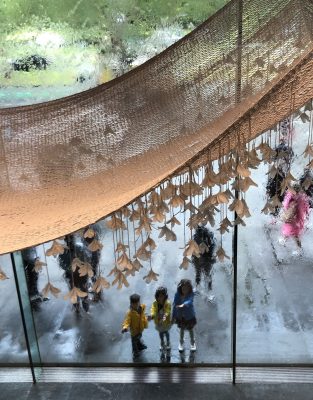
Photo: Children play at the waterwall. Glenda Nicholls’ “Miwi Milloo” fishing net.
© Photographs and Text Pamela Reid/tPRo 2021
